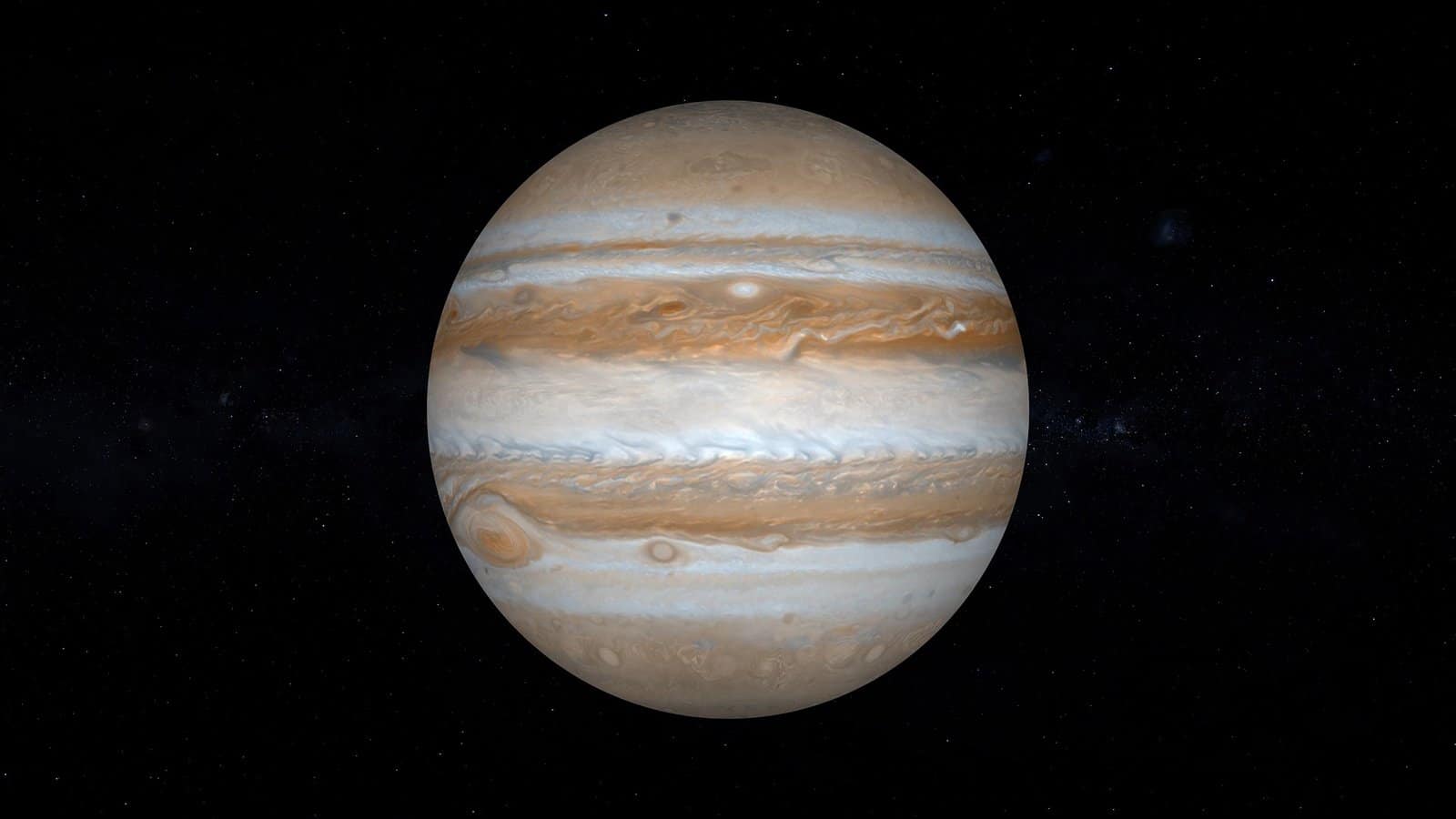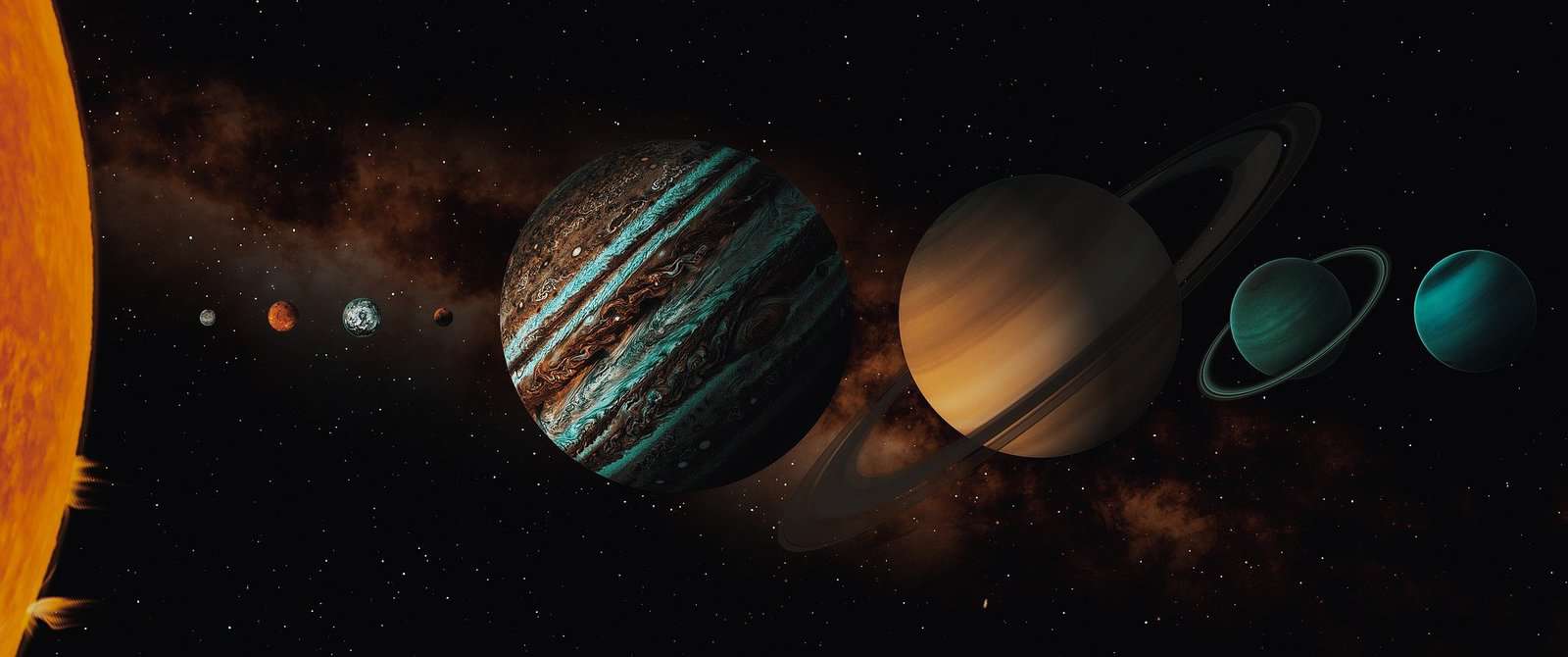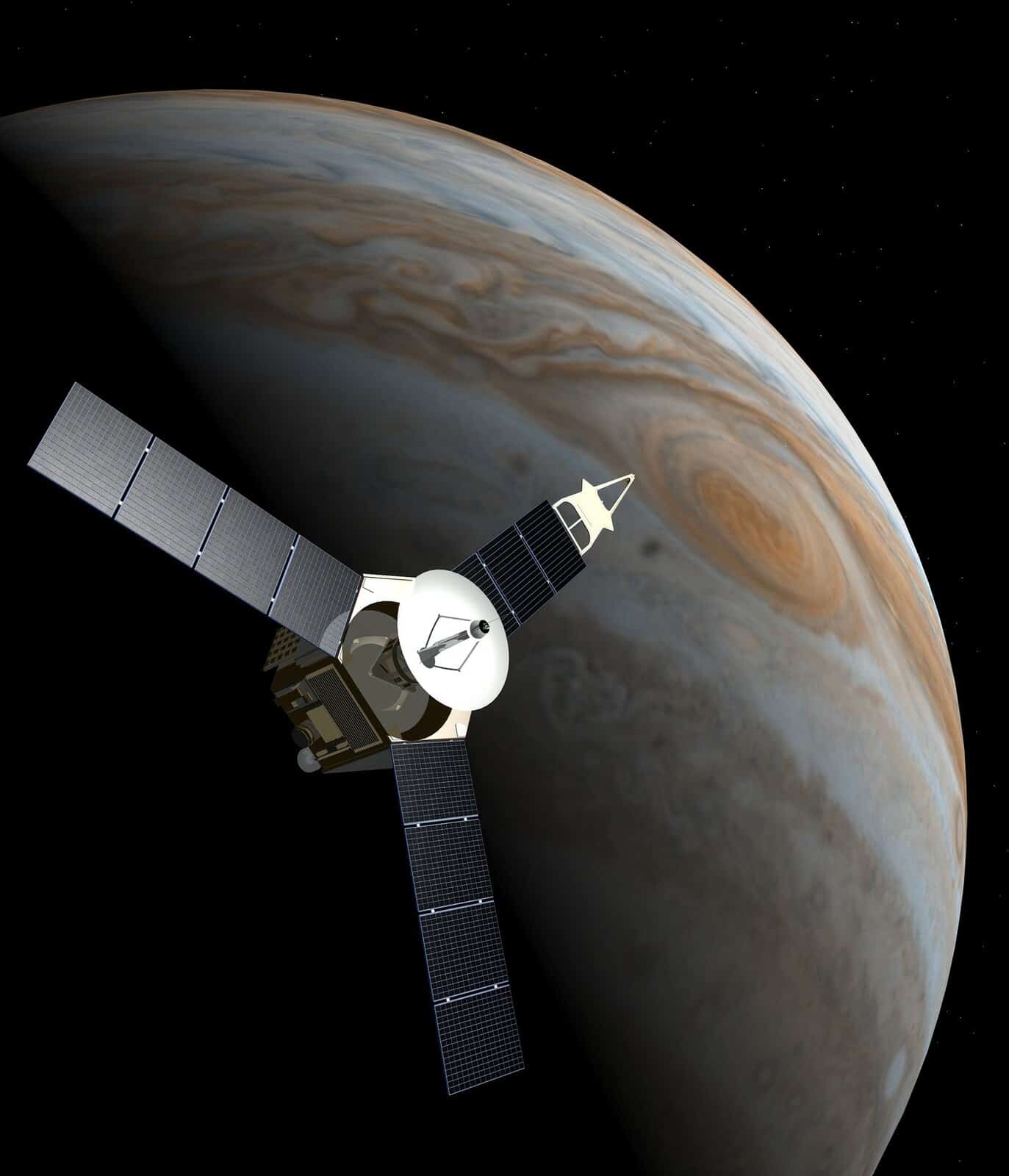
Jupiter: The Biggest Planet in our Solar System! Learn 13 Interesting Facts
What is the biggest planet in the Solar System? The answer for this question would be “Jupiter”.
Jupiter is the fifth planet from the Sun, between Mars and Saturn. It is the biggest planet in the solar system. In fact, Jupiter is so big that it could easily swallow all of the other planets around it in the solar system.
Jupiter is considered a gas giant. This is because it consists of gas. In fact, Jupiter is very similar to a star, but it has never got big enough to start burning as stars do. The average distance between Jupiter and the Sun is about 778 million kilometers.
Surface and Structure
Jupiter is one of the gas giant planets. This kind of planet consists almost entirely of gases. The main two gases that Jupiter consists of are hydrogen and helium. Jupiter has no solid surface. Instead, it has layers of clouds that appear in colored spots and bright and dark stripes. One of those spots is a huge storm called the Great Red Spot. Deep inside Jupiter, the pressure increases so much that it turns hydrogen gas into liquid, and then into metal. This area is so hot and thick, and it may reach temperatures of 45,000° F (25,000° C). Finally, there is a rocky core under the hydrogen, and it is about the size of Earth.
Atmosphere
Jupiter has a huge and thick atmosphere. In fact, it is the largest atmosphere of a planet in the Solar System. It consists mostly of molecular hydrogen and helium. It also contains small amounts of many other gases, including methane, ammonia, hydrogen sulfide, water vapor, and nitrogen.
Clouds form in the lower parts of Jupiter’s atmosphere. The temperature there gets colder when moving high above the planet. The middle and upper levels of the atmosphere are hotter because the gases absorb solar radiation. The clouds appear in dark and bright colors. Scientists think that they vary in color because they contain different chemicals.
The atmosphere of Jupiter is also stormy and unstable. The clouds form and change within hours or days. However, the wind currents have been stable for more than decades. Strong winds blow east or west through the atmosphere, and they are sometimes interrupted by large storms that appear from above as ovals.
The Great Red Spot
The most constant feature in the atmosphere of Jupiter is the Great Red Spot. It has been observed from Earth continuously since 1878, and it may even be the same storm that was observed from 1665 to 1713. The spot is a huge storm in the shape of an oval in the southern hemisphere of Jupiter. It has strong winds that swirl counterclockwise about a center in which the pressure is so high.
The Great Red Spot covers a huge area that is larger than Earth itself. It is about 16,500 kilometers wide, and it has been shrinking since the late 19th century. Since 2012, the Great Red Spot has become more circular and has been shrinking faster. It loses about 900 kilometers in width each year.

Temperature
The source of temperature on Jupiter is its inner part, not the Sun. So, the temperature on Jupiter depends on the height from the surface. The average temperature on Jupiter is -145 °C (-234 °F). Near the center of the planet, the temperature is very high and may be about 24,000 °C (43,000 °F) at the core, which is hotter than the Sun’s surface. About 50 kilometers above the surface, the temperature decreases and ranges from -100 °C (-150 °F) to -160 °C (-260 °F). In the clouds of Jupiter, the temperature is about -145 °C (-234 °F).
Size
Jupiter is the largest planet in the Solar System. It is so huge that it could contain more than 1,000 Earths. Its diameter is about 143,000 kilometers. This is more than 11 times the diameter of Earth, and more than 29 times the diameter of Mercury. More than 24,000 Mercury’s would fit inside Jupiter.

Orbit and Rotation
Like other planets, Jupiter has two types of motion: orbit around the Sun and spin about its centre. Jupiter orbits the Sun very slowly. It takes about 12 Earth years to complete one orbit, so a year on Jupiter lasts about 12 Earth years. On the contrary, Jupiter rotates, or spins, rapidly about its center. It takes less than 10 hours to complete one rotation, so a day on Jupiter lasts less than 10 hours.
Moons
Jupiter has 79 known moons. It has the second largest number of moons with stable orbits of any planet in the Solar System. Most of Jupiter’s moons are very small. However, it has four very large moons: Io, Europa, Callisto, and Ganymede. Those four massive moons are called Galilean moons, and they were discovered in 1610 by Galileo Galilei. They were the first discovered objects to orbit a body in the Solar System other than Earth and the Sun.
Ganymede is larger than the planet Mercury, and it has its own magnetic field. Scientists believe that Europa and Ganymede may have water ice beneath their surfaces. Io is the most volcanic body in the solar system.
Rings
Jupiter has 3 ring systems surrounding it. They are thin and very faint and hard to see. The rings consist of rocks and tiny rocks. They are much smaller and dimmer than the rings of the planet Saturn.
Name
Planet Jupiter is named after the Roman god “Jupiter”, who was the king of gods. To the ancient Greeks, he was known as Zeus, and they believed that it was their most powerful god. The Romans gave this name to the planet because of its huge size.
Discovery and Exploration
People have observed Jupiter from Earth since ancient times because it can be seen without a telescope.
In 1973, scientists sent a space probe called Pioneer 10 to explore Jupiter. The probe flew by the planet and collected information about it. They also sent another one called Pioneer 11.
After the Pioneer probes, NASA sent other probes called Voyager 1 and 2. They gave us the first close up shots of Jupiter’s moons. Since then, there have been many more probes to fly by Jupiter.
The only spacecraft that has orbited Jupiter was the Galileo in 1995. It dropped a probe toward Jupiter that sailed through the layers of gases and collected information about them. It was the first human-made object to make contact with a gas giant planet.

13 Interesting Facts About the Biggest Planet: Jupiter
- Jupiter is bright in our night sky, and it is actually the third brightest objects, after the Moon and Venus.
- Jupiter is one of the five visible planets from Earth. The others are Mercury, Venus, Mars and Saturn.
- Jupiter is the most massive planet in the Solar System. Its mass is almost twice of all the Solar System’s planets combined. Its Mass is around 318 times larger than that of Earth.
- Some astronomers consider Jupiter a failed star because of its mass.
- If Jupiter would be more massive than it currently is, it would become a star just like the Sun.
- Jupiter generates high amounts of heat because it is so massive. The heat it generates is actually more than the heat it receives from the Sun.
- Because of the large amount of heat it radiates, Jupiter shrinks about 2 centimetres every year. Scientists do not know when it will stop shrinking.
- Every 13 months, Jupiter comes closer to us and becomes very bright in the night sky.
- Jupiter is like a vacuum cleaner to the Solar System. Its powerful gravity attracts many of the comets and asteroids to hit it rather than other planets. Jupiter is exposed to the impacts of asteroids and comets 200 times more than Earth is.
- There are dangerous waves of radiation surrounding Jupiter that make it hard for spacecraft to approach the planet.
- If you would weigh 100 pounds on Earth, on Jupiter you would weigh 240 pounds because of the gravitational force. So, on Jupiter, you would weigh 2.5 times more than on Earth.
- Scientists believe that there are many chances for Jupiter’s moon Europa to develop and support life.
- A space journey from Earth to Jupiter takes about 13 months.


Leave a Reply